

Damion Smy
Chevrolet Corvette Grand Sport could get 6.7-litre LS6 V8 - report
41 Minutes Ago

Journalist
With the final HSV SportsCat dual-cab ute last month rolling off the production line, Holden Special Vehicles as a brand is officially gone.
Although the spectre of a rebirth as General Motors Special Vehicles (GMSV) looms on the horizon, that’s all still to come.
For now, let’s rewind the clock some 33 years to a time when Kylie Minogue’s Locomotion and Icehouse’s ElectricBlue were topping the charts.
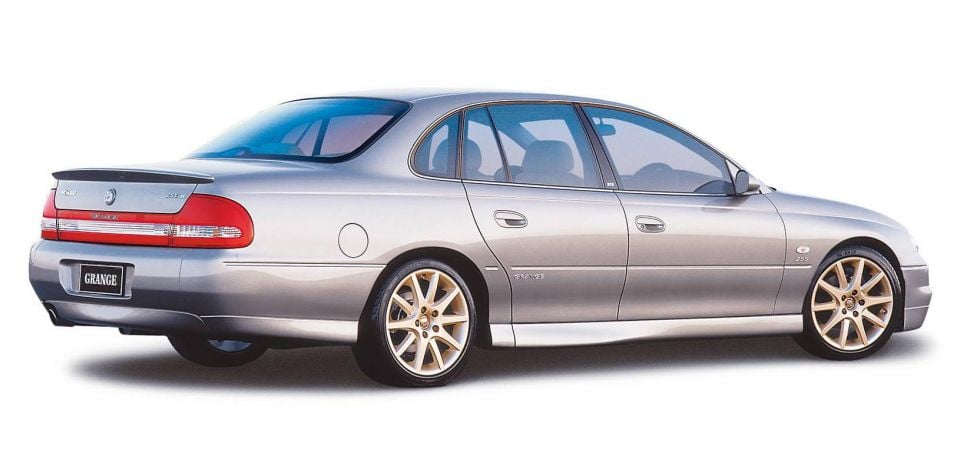
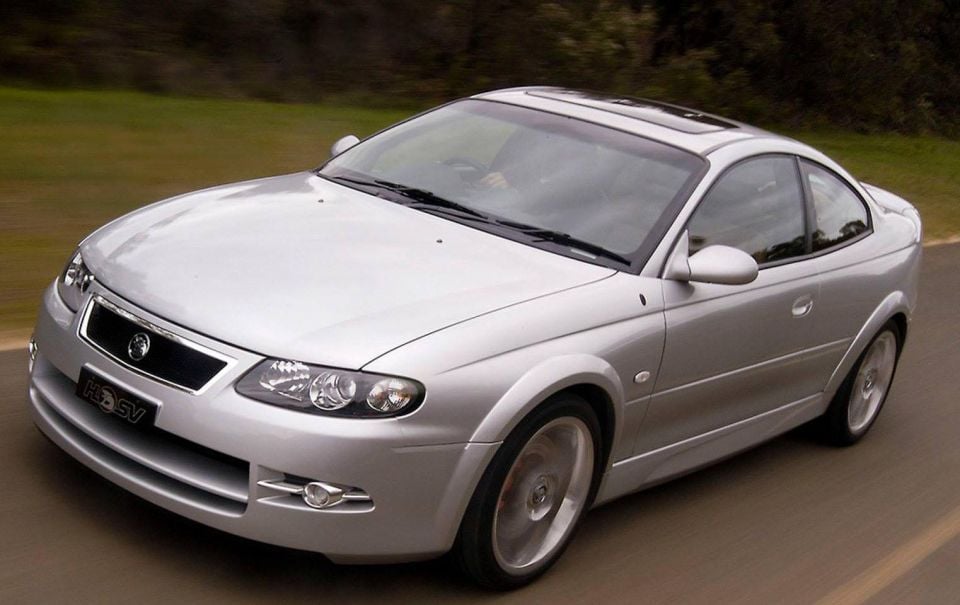
HSV would never have come into existence if Peter Brock hadn’t dabbled in some New Age “science” and started adding crystal “energy polarisers” to the Holden Dealer Team’s (HDT) race cars, as well as its modified Commodores.
In 1987 Holden severed its relationship with the Brock-owned outfit when the famed racing driver insisted on fitting the box of crystals and epoxy as standard to the HDT Director.
That left the carmaker searching for a new partner to help produce homologated race cars and souped-up road-going variants. Holden settled on Tom Walkinshaw and his racing outfit.
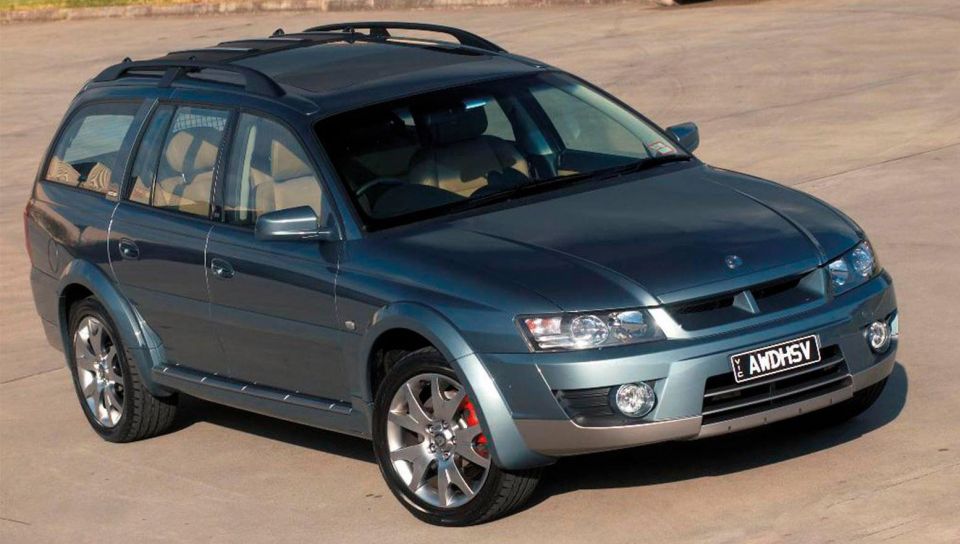
HSV took a while to settle on a stable of models spun off from the Commodore range. It dabbled with number of different cars throughout its life.
Manta: Built between from 1995 and 1999, the Manta was a short-lived entry-level sedan with a 5.0-litre V8 and either a five-speed manual or four-speed auto.
Its proximity to Commodore SS in both price and looks made it a tough sell.
Clubsport: When the Manta disappeared, the Clubsport effectively took over the role as the base HSV model with a more powerful V8 and amped up styling.
GTS: Outside of special edition models, the GTS and its variants offered as much performance and handling as a factory-approved Commodore could handle.
Senator: While much of HSV’s wares were very happy to shout about their sporting credentials, the Senator was a more discreet offering and was based on the range-topping Calais short wheelbase Commodore.
Grange: Sometimes you want performance with the space of a long wheelbase sedan.
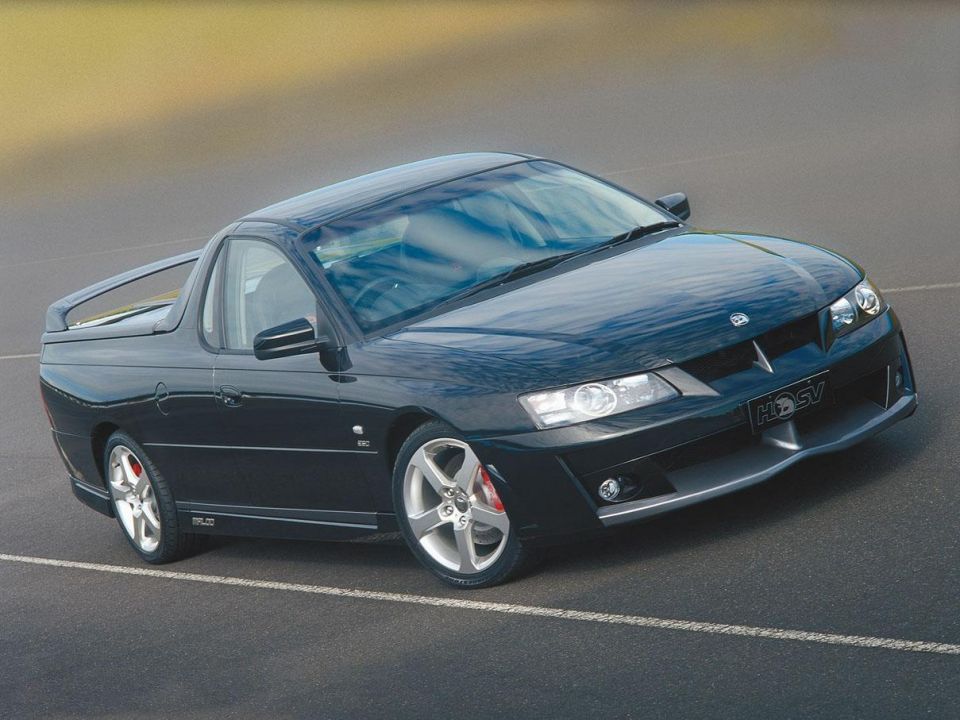
Maloo: Introduced in 1992, the HSV ute started out as a mild child, but grew louder and louder, and became enduring part of the company’s range.
Coupe: The two-door model not only had more aggressive styling and more power than the regular Holden Monaro, but it was the only way you could add all-wheel drive to the two-door with a system adapted from the Adventra soft-roader wagon.
Avalanche: In the early- to mid-oughts Holden broadened the Commodore range to include the Outback-style Adventra wagon and the four-door Crewman ute. HSV naturally followed suit with Adventra-based Avalanche wagon and Crewman-based Avalanche XUV.

1987 (VL) Holden Commodore SS Group A SV
While it’s technically not an HSV because it wore Group A homologation rules forced it to bear Holden badges, it was the first road-going car the new outfit produced.
The reworked 5.0-litre V8 engine had fuel injection while more pedestrian Commodores made do with carburettors.
With its 180kW of power and 380Nm of torque, the Group A SV needed around 7.0 seconds to hit 100km/h.
Most eye-catchingly, the car was fitted with new body kit said to reduce drag by 25 per cent over the earlier HDT-developed model.
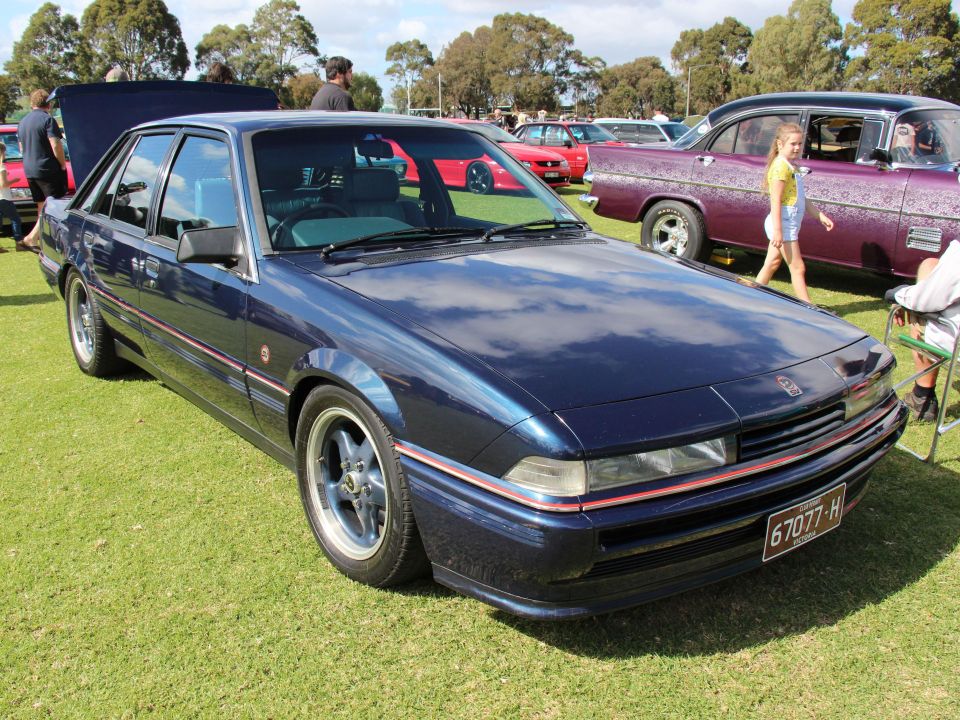
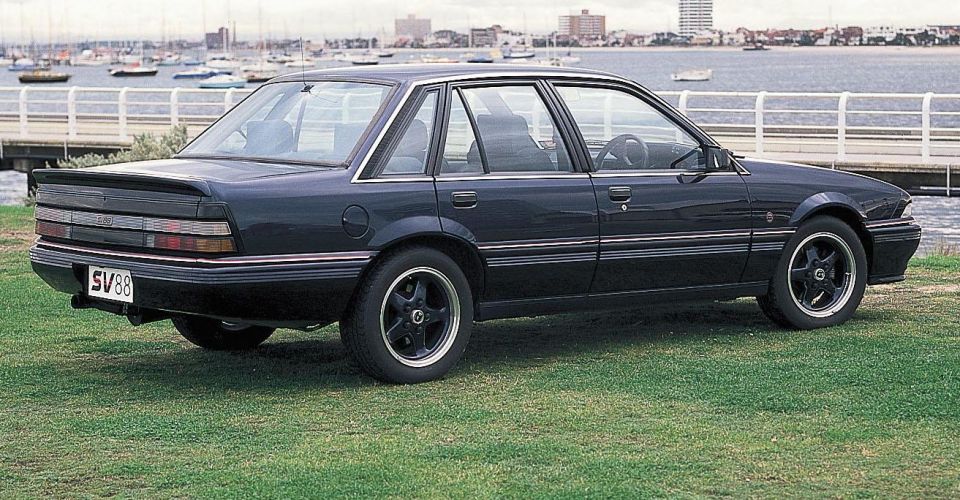
1988 HSV SV88
The first HSV branded vehicle was actually a luxury model based on the Calais. The 5.0-litre V8 had a four-barrel carburettor and upgraded internals to produce 136kW and 355Nm – up from the standard 122kW with 323Nm.
A fraction under 9.0 seconds was required for the SV88 to hit the tonne.
This meant the company’s first product was less powerful than a Commodore fitted with a turbocharged 3.0-litre straight-six. This engine was borrowed from the Nissan Skyline and made 150kW.
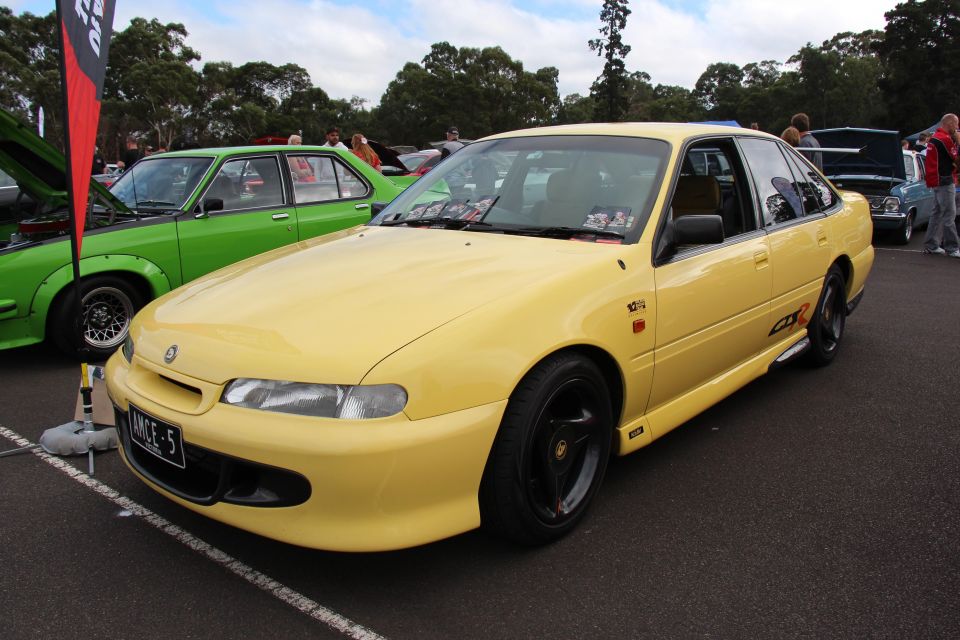

1996 (VS) HSV GTS-R
Definitely not for shy or retiring types, the GTS-R was only available in yellow – sorry “yellah” – with contrasting black highlights. The cabin also featured yellow seats.
It came fitted with a massive rear wing, which was definitely of its era. Everything from the Subaru WRX and Honda Integra Type R to the Ford Escort RS Cosworth all featured dinner tables on their boot lids at the time.
Only 85 GTS-R sedans were made, fitted with a six-speed manual transmission and a 5.7-litre fuel-injected V8 with 215kW and 475Nm. That’s good a 0-100km/h time of 6.1 seconds.
A “blueprinted” version of the engine was available if you had spare $10,000 on hand. Once liberated of your pesky cash you could enjoy the stroked engines’s 230kW and 475Nm.

2000 (VT Series II) HSV GTS 300
With the Series II update, Holden junked its long-lived indigenous V8 for the significantly more modern Gen III LS1 5.7-litre V8 made in North America.
In regular Holdens, this engine made 220kW – more than most tuned versions of its old V8.
With the GTS 300, HSV teamed up with Callaway to crank the V8 up to 300kW and 510Nm.
It obliterated the 0-100km/h standard in 5.1 seconds.
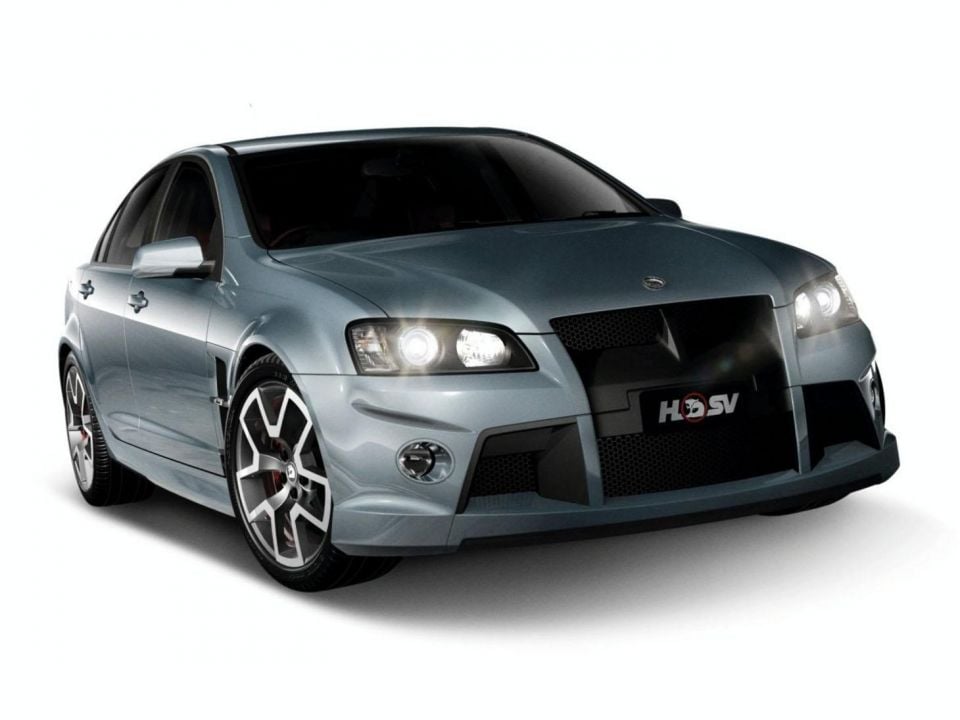
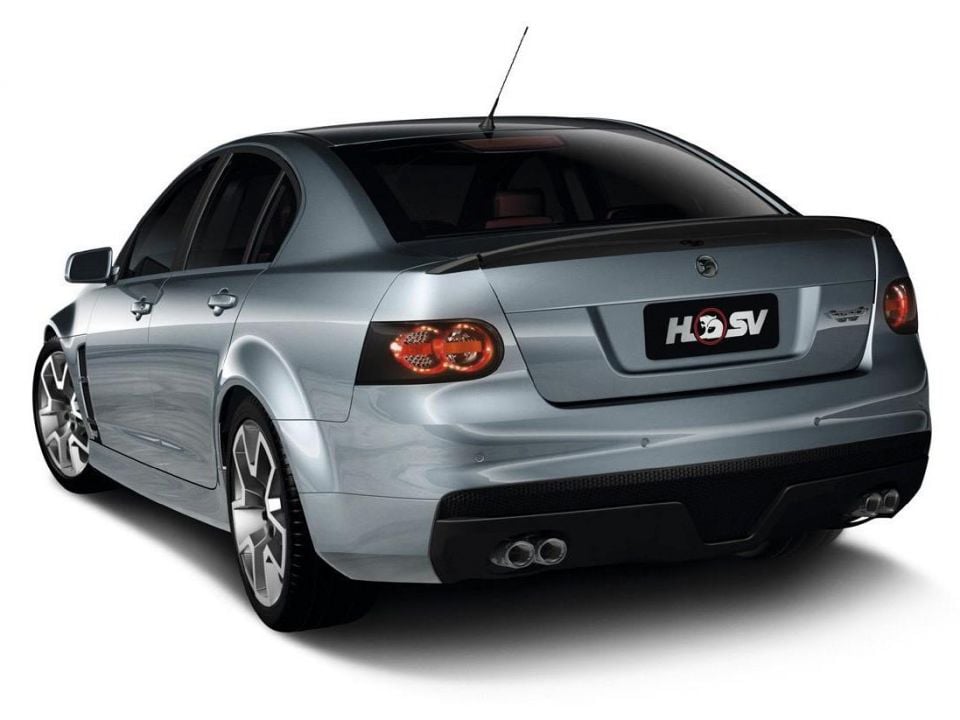
2008 (E-Series) HSV W427
With the VE Commodore range using the locally developed Zeta platform rather an adapted Opel design, HSV went the extra mile to set its vehicles apart from their run-of-the-mill siblings.
Changes included a unique LED tail-light design and large vertical fender vents. Facelifted models gained the Pontiac G8’s vented bonnet, and new LED daytime runnings.
Perhaps most importantly, from 2009 HSV was one of the first manufacturers to offer magnetic ride control, no doubt saving a few drivers from stumping up for a chiropractor.
The pick of the litter for us — unfortunate grille design aside — was the W427, which sprang from the cancelled HRT 427 Coupe program, featured the company’s largest V8, and helped to celebrate the brand’s 20th birthday.
Equipped with the Corvette Z06’s dry sump LS7 7.0-litre engine, the W427 had 375kW and 640Nm at its disposal. With a toughened up six-speed manual, the W427 needed only 4.5 seconds to see off the 100km/h mark.
Although a production run of 427 cars was envisaged, the $155,000 asking price meant only 137 sedans were produced.
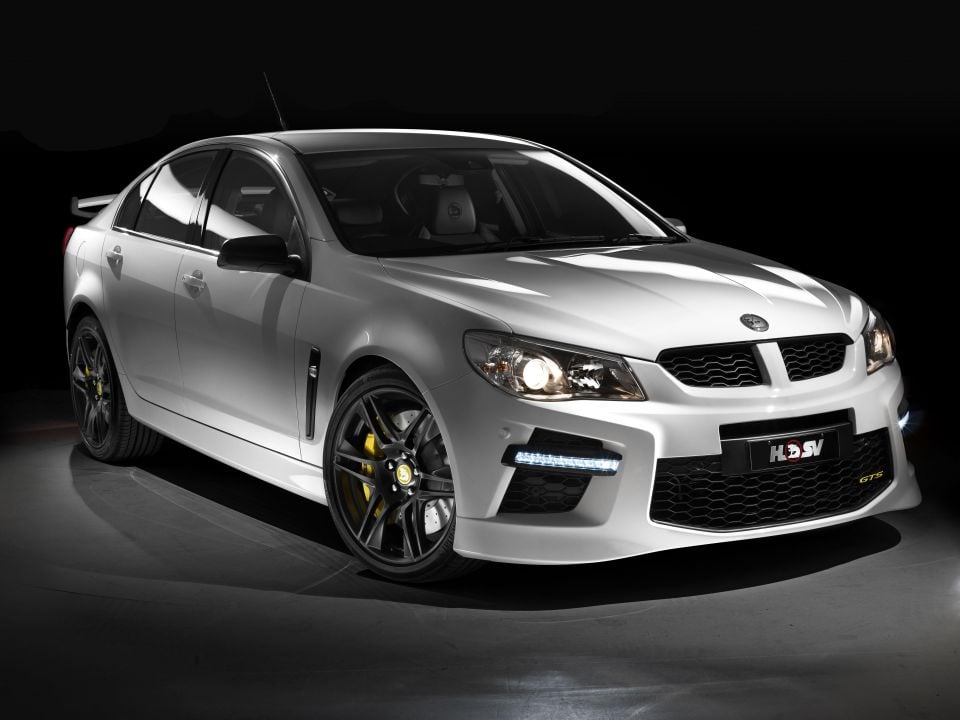

2013 (Gen-F) HSV GTS
The transition to a VF Commodore meant HSV lost a lot of its unique design features from the previous generation.
With styling toned down somewhat, the company invested its money under the bonnet, and brought in the supercharged 6.2-litre LSA V8 from the Cadillac CTS-V.
Rated at 400kW and 740Nm, the GTS was capable of completing the 0-100km/h dash in 4.3 seconds.
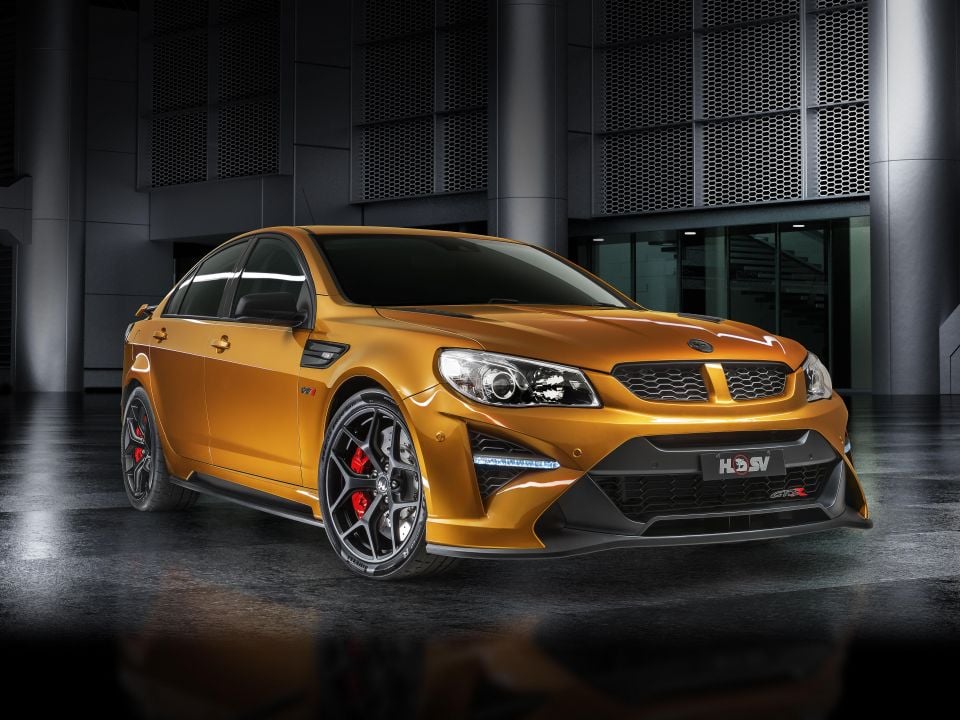

2017 (Gen-F2) HSV GTS-R W1
As expected, HSV marked the end of an era by cramming as many ponies as possible under the bonnet.
Its LS9 6.2-litre supercharged V8 was tuned to deliver 474kW and 815Nm to the rear wheels through a beefed up Tremec six-speed manual. The W1 needed just 4.1 seconds to shoot through the 100km/h mark.
The W1 also featured carbon-fibre fender vents, air box, and rear spoiler. It rode on 20-inch alloy wheels with Pirelli P Zero Trofeo R rubber.
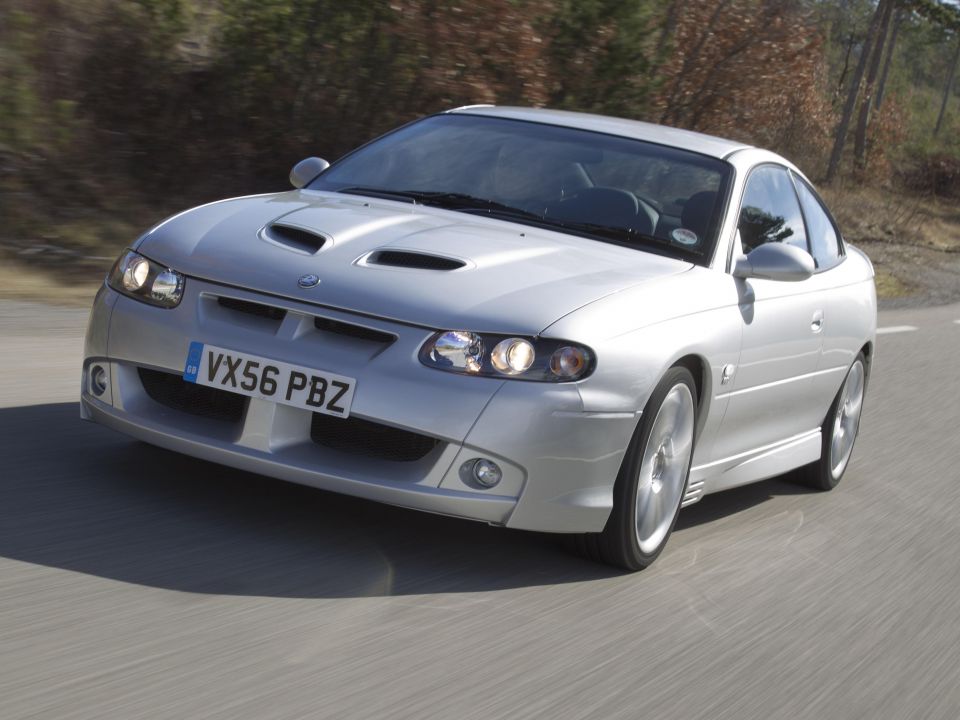
Although Holden as a modern brand was essentially limited to Australia and New Zealand, some HSV products did make out into the broader world.
Vauxhall, then GM’s offshoot in the UK and Ireland, offered a selection of HSV wares under its VXR sub-brand. The Monaro won itself a cult following in the UK, although sales never set the world on fire.
The Griffin brand even offered the VE-based VXR8 with an optional supercharger several years before HSV added forced induction to its Australian range.
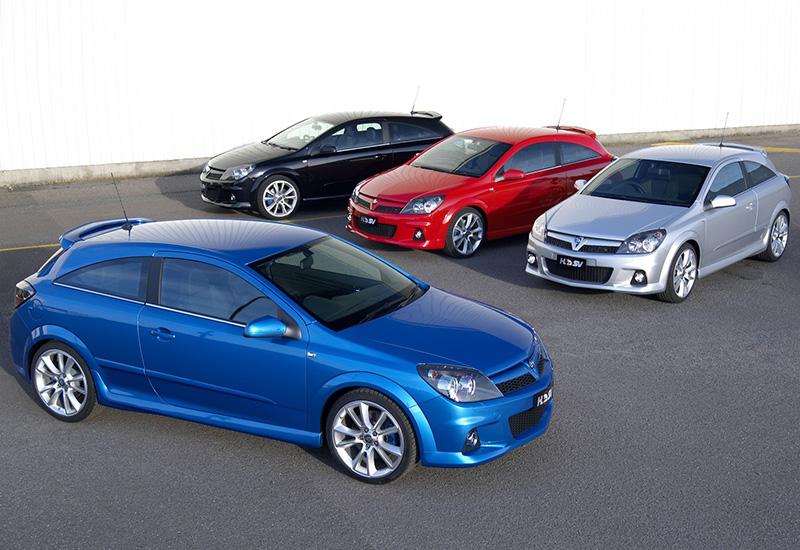
Until Holden’s closure of local manufacturing in 2017, HSV stuck largely to adding spice to the company’s range of Commodore-based products.
In all, the company made around 90,000 Commodore derivatives, most with a V8 engine, although the company did dabble from time to time with naturally-aspirated and supercharged V6 engines.
In addition to this, just a year into the company’s life, HSV offered up the Astra SV1800, a lightly warmed over version of Holden’s Nissan Pulsar-based small car.
As part of the Button plan for local manufacturers, the local Astra and Pulsar ranges featured Nissan bodies married to Holden drivetrains.
In addition to the SV1800’s body kit, there was also a sports exhaust. Let’s just say it wasn’t a success.
Burnt by the failure of the Astra, HSV stayed away from small cars until 2006 when it brought over the Vauxhall Astra VXR and sold it as the HSV VXR.
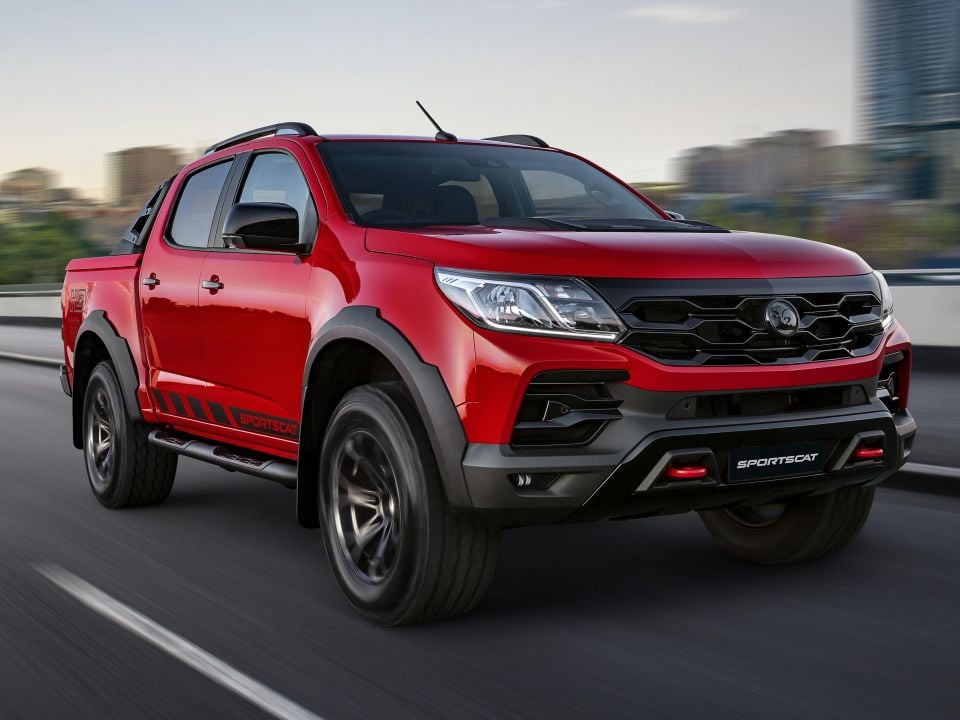
While Ford Performance Vehicles exited the scene before Ford ended Australian production of the Falcon and Territory, HSV decided to stay and fight.
HSV steered clear of modifying the fully imported front- and all-wheel drive Commodore, and instead shifted to tweaking the Colorado dual-cab ute.
With revised styling features, extra ground clearance, and a diesel engine with no extra power, the SportsCat went looking for a different audience.
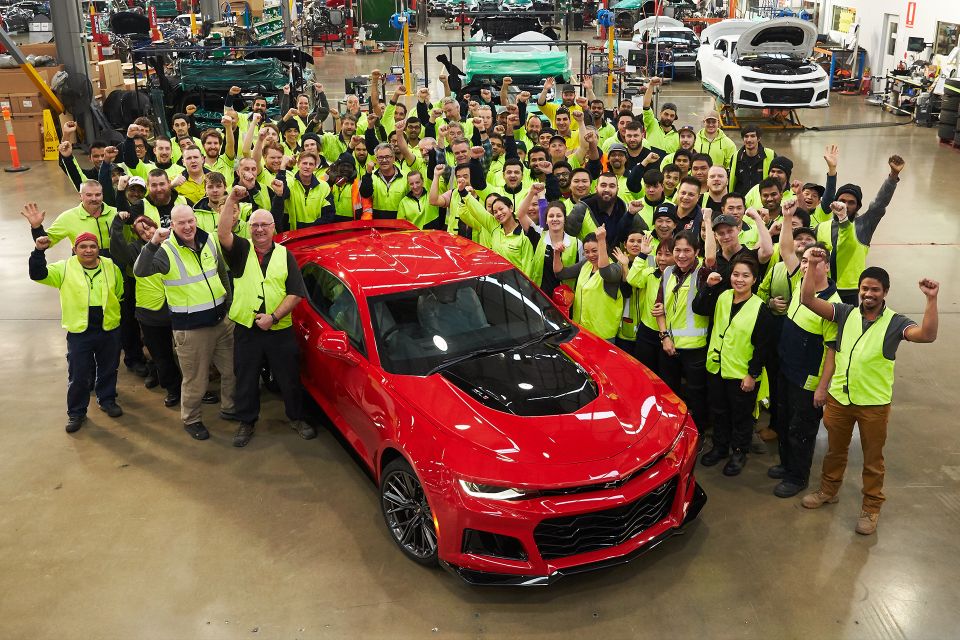
Muscle car fans were catered for by imports of the Chevrolet Camaro. As the company had to convert the pony car from left- to right-hand drive, the Camaro was at a significant price disadvantage to the factory right-hand drive Ford Mustang.
The company also brought in Chevrolet Silverado pickup trucks. Like the Ford F-150 and Ram 1500 against which it competes, the Silverado has been converted to right-hand drive locally.
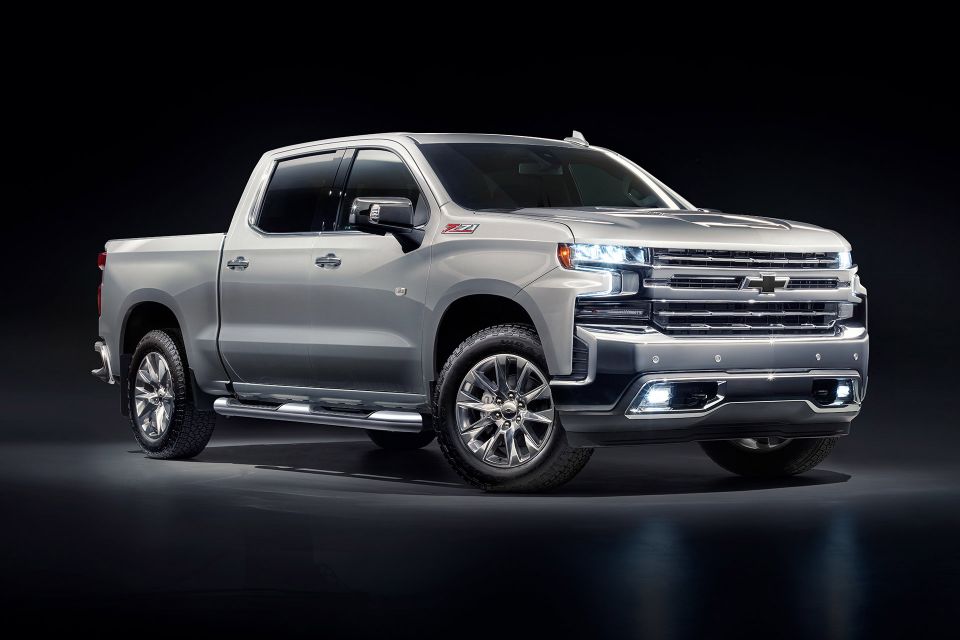
In early 2020 General Motors confirmed it would cease manufacturing vehicles in right-hand drive, meaning Holden would die once the vehicles in dealer showrooms were sold.
The automaker did commit to bringing in a limited selection of vehicles into Australia by an entity to be known as General Motors Special Vehicles (GMSV). It’s believed that entity will be a continuation of HSV, although details about the new organisation haven’t been finalised.
Most will vehicles will be locally converted to right-hand drive, but the eighth-generation Corvette will be built in right-hand drive in the US.
General Motors hasn’t announced which models be brought here under the GMSV banner, but it seems likely the popular Silverado models will continue.
Rumours have hinted at performance metal, such as the Cadillac CT4-V Blackwing and CT5-V Blackwing. There has also been chatter about future electric vehicles, such as the GMC Hummer EV pickup truck and Cadillac’s upcoming EV range.
What’s your favourite HSV model? Did we miss a particularly notable vehicle? Let us know (nicely) in the comments section below.
Where expert car reviews meet expert car buying – CarExpert gives you trusted advice, personalised service and real savings on your next new car.
Derek Fung would love to tell you about his multiple degrees, but he's too busy writing up some news right now. In his spare time Derek loves chasing automotive rabbits down the hole. Based in New York, New York, Derek loves to travel and is very much a window not an aisle person.


Damion Smy
41 Minutes Ago


Damion Smy
2 Hours Ago


Damion Smy
4 Hours Ago


Damion Smy
5 Hours Ago


Damion Smy
7 Hours Ago


William Stopford
8 Hours Ago